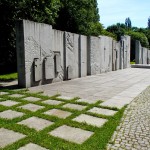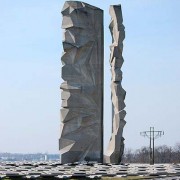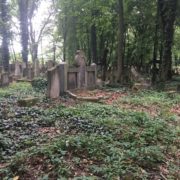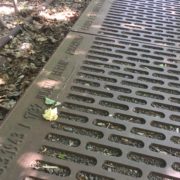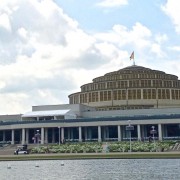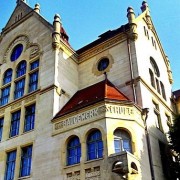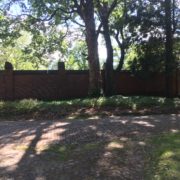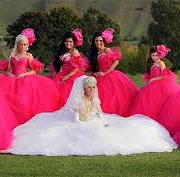Marble made Monument
By: Megan Newell
The comfortable little gem of a city known as Wroclaw is not only our home for the time being, it is, and continues to be, a place of persistent issues of awareness and integration of the past. As a city who has swung like a pendulum back and forth between German and Polish control over the years, the problem of dealing with its past is crucial for the city itself as well as its relations. This has become an ever-present issue today, particularly regarding the overarching tragedy that was World War II. The question has developed into one of identity and empathetic awareness of those whose lives, in one way or another, fell victim to the great chaos and turmoil caused by the war itself or its aftermath. In order to address this problem the Polish nation, as well as its general public, must not only victimize themselves and recognize their own turmoil and tragedy, but also take note of, openly accept and make peace with the uprooting of German citizens who once inhabited the lands.
During one of our walks through the beautiful and historical Wroclaw (formerly known as the German city of Breslau) we found ourselves, not without purpose or direction, gazing upon the giant and seemingly abstract monument to the Polish Soldiers. The monument stands atop a massive hill in a park in Wroclaw and memorializes Polish soldiers taken as prisoners of war during the Second World War. Standing at the foot of the hill makes everything seem quite surreal; you seem tiny and yet the monument in the distance, placed among the clouds, seems so profound and so terribly important. After climbing up the hill you see that lying on the floor, dispersed to the right of and all behind the large twin pillars are 603 sizeable concrete tablets that each represent a fallen or captured soldier from World War II. After beginning our descent, I remembered that the monument itself sits on a hill, not coincidentally found in nature, but instead artificially constructed and consisting of the rubble and remains of a once great German town. Yet somehow the monument, with all its glory and intent, curiously sits atop this hill of memories showcasing and permanently memorializing Poles who fell victim to the war.
With that said, it is easy to simply look at the Poles as the sole victims of the totalitarian regime. However, in order to see the large-scale picture of the devastation of war, you must be able to recognize the pain and suffering of those German citizens (among other victims, of course), who were tragically forced out of their homes and made to bear the weight of their loosely affiliated national kin’s wrongdoings. Walking through the forest, or park, if you so please, you can find the newly erected (2008) Monument to Shared Memory, which can be described as an attempt by the city of Wroclaw at accepting and reconciling with the suffering of their neighbors during this chaotic time of war, and particularly thereafter. Namely, attempting to reconcile with the former cities population, who were entirely forced out after the war– driving those German citizens to ‘return’ to a condensed German territory that, ironically, was completely foreign. Though it seems like this monument, which states, “In memory of the former members of our city buried in cemeteries that are no longer existing”, is really an attempt at recognizing and making amends for the sufferings of the German citizens, it cannot help but fall short of its intent.
The quote inscribed on the stone of the monument really makes you wonder – where are the cemeteries now and where were they then? To answer this question: of the 70 cemeteries that could once be found in Wroclaw territory, only 3 remain. Though not all, of course were for local German citizens living in this city (there were Jewish cemeteries, Catholic, Protestant, and Municipal), the German cemetery that did, in fact, lie in this park was destroyed by Polish citizens who moved in after the war. The attempt to making, or rather re-making this city Polish, unfortunately, meant the eradication of almost all remnants of German civilization in this area, where Germans had lived for years. Meaning headstones were dug up and either used for cobblestone to pave the roads or recurved for the use of Polish headstones. This quick, yet culturally disastrous, move by the Poles has created tension and unrest between the new inhabitants and those whose memory is deeply embedded in the soil of the land.
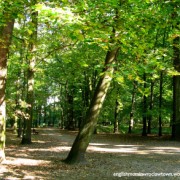
A picture of the park in which you can find the Monument to Shared Memory and also where the German Cemeteries would have been had they not been completely destroyed.
Therefore, a few things come in to play when assessing whether or not the problem of reconciling with Wroclaw’s complicated and multi-national history has been properly tended to. First of all, the fact that the monument to Polish soldiers stands, well more accurately towers, over the park as a definitively powerful and omnipresent monument, one could say, is a testament to both the national pride of a seemingly homogenous nation and to its heavy victimization during the war. On the other hand, the fact that below this monument you will find a large empty plot of land, covered by the ages with grass and leaves, that was once a great cemetery to the former inhabitants of the city, but is now simply a distant and buried memory is a grave fact. Despite the cities attempt to hastily fix the problem with one simple, yet ostensibly empty gesture, the snuffed memories of the former inhabitants of this land will remain an issue to be solved in order to achieve reconciliation moving forward.

